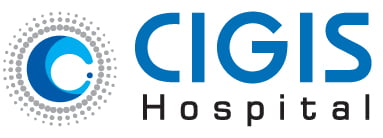
Pancreatic cysts are sac-like pockets of fluid on or within your pancreas. The pancreas is a large organ located behind the stomach. It produces hormones and enzymes that help digest food.
Most pancreatic cysts aren’t cancerous, and many don’t cause symptoms. In fact, many pancreatic cysts technically aren’t cysts at all. Called pseudocysts, these noncancerous (benign) pockets of fluids are lined with scar or inflammatory tissue, not the type of cells found in true cysts.
But some pancreatic cysts can be cancerous. Your doctor may want to take a sample of the pancreatic cyst fluid to determine if cancer cells are present.
Sometimes, your doctor may not be able to tell whether a cyst may become cancerous. Your doctor may recommend monitoring the cyst over time for changes in size or shape that may suggest the need to remove it surgically. Some cysts have a low potential for becoming cancerous, and your doctor may recommend watching them carefully.
You may not experience any symptoms from pancreatic cysts, including pseudocysts. Pancreatic cysts are often found when imaging tests of the stomach area (abdomen) are done for another reason.
When signs or symptoms of pancreatic cysts do occur, they typically include:
Cysts can become infected, though this is rare. See a doctor if you are feverish and have persistent abdominal pain.
A ruptured pseudocyst is a medical emergency. Fluid released by the pseudocyst can damage nearby blood vessels and cause massive bleeding. A ruptured pseudocyst can also cause infection of the abdominal cavity (peritonitis). Seek emergency medical treatment if you have signs or symptoms of internal bleeding and shock, including:
The cause of pancreatic cysts is often unknown. Cancerous cysts can be caused by genetic mutations. Some cysts are associated with rare illnesses including von Hippel-Lindau disease, a genetic disorder that can affect the pancreas and other organs.
Pseudocysts often follow a bout of pancreatitis, a painful condition in which digestive enzymes become prematurely active and irritate the pancreas. Pseudocysts can also result from injury to the abdomen, such as from a car accident.
Heavy alcohol use and gallstones are risk factors for pancreatitis, and pancreatitis is a risk factor for pseudocysts — the most common type of pancreatic cyst. Abdominal injury is also a risk factor for pseudocysts.
Pancreatic cysts are diagnosed more often than in the past because improved imaging technology finds them more readily. Many pancreatic cysts are found during abdominal scans for other problems.
The biggest challenge during diagnosis is determining whether the pancreatic cyst is cancerous. These procedures are often used to help with diagnosis and to help plan treatment:
The characteristics and location of the pancreatic cyst, along with your age and sex, can help doctors pinpoint the type of cyst you have:
Treatment depends on the type of cyst you have and whether it is causing symptoms.
A benign pseudocyst, even a large one, can be left alone as long as it isn’t bothering you. Serous cystadenoma rarely becomes cancerous, so it also can be left alone unless it causes symptoms or grows.
But all pancreatic cysts should be monitored. Cysts smaller than 10 millimeters (0.39 inches) can be imaged with CT scan after one year, and then less frequently if they remain stable. Cysts larger than 10 millimeters usually require regular endoscopic ultrasound to look for worrisome features.
A pseudocyst that is causing bothersome symptoms or growing larger may be drained. A small flexible tube (endoscope) is passed through your mouth to your stomach and small intestine. The endoscope is equipped with a needle to drain the cyst.
Surgery may be needed to remove an enlarged pseudocyst or a serous cystadenoma that’s causing pain or other symptoms. Other types of pancreatic cysts generally require surgical removal because of the risk of cancer.
A pseudocyst may recur if you have ongoing pancreatitis.
The best way to avoid pseudocysts is to avoid pancreatitis, which is usually caused by gallstones or heavy use of alcohol. If gallstones are triggering pancreatitis, you may need to have your gallbladder removed. If your pancreatitis is due to alcohol use, abstaining from alcohol can reduce your risk.
To book your appointment with a gastro surgeon, please reach out to us on +91 8160650099

